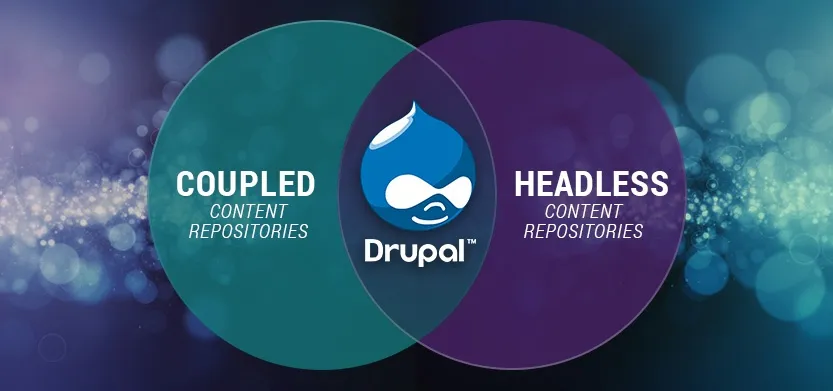

Posted in Digital Commerce, Drupal
June 13, 2017
Coupled or Headless Content Repositories. Where does Drupal fit in?
As the technological landscape changes, there has emerged a growing discussion amongst developers regarding the best way to go about generating content to be used across multiple applications.
There are two trains of thought -- a traditional, coupled Content Management System (CMS) with supporting Application Program Interface (API), tied to both a backend and frontend OR a headless API-only CMS tied only to a backend. Naturally, as a Drupal web development agency, we look to understand this discussion so that we know where Drupal fits in.
Why does it matter?
We’ve long since moved passed the days of website-only content. While websites drive the majority of the digital content we consume, we now have emerging technologies challenging this traditional interface.
As an example, take a smart thermostat in your home. There’s no way you’re going to be viewing the weather network’s website on a small screen that may not have much of a graphical display. So, how does the network provide content to this thermostat? Simple, the thermostat’s software accesses the information via a CMS's API, taking only what it needs and displaying it on the display.
This same API might also be providing information to a weather app on your phone, your smartwatch, and your car, and … the list goes on.
This is the power of a centralized content system with an API that has the ability to distribute that content to any device that can access the API. If it wasn’t for this, someone would need to generate that content separately for each device, a monumental task.
Coupled vs. Headless CMS
The first question to understand is: What’s the difference is between these two approaches?
Coupled CMS (with supporting API)
A traditional CMS, such as Drupal, allows content editors to add or edit content and have immediate feedback as to how the content will display. This is because a traditional CMS is tied to a front end.
The front end is what a user sees when viewing an application, which, in Drupal’s primary case, is a website. Marketers and content editors can view the content before it’s publicly available using tools such as inline editing or pre-published previews. Drupal shines in this regard, and its graphical interface and available modules allow for quick and relatively easy modification to how the data is displayed on the frontend. This makes it so that a developer isn’t always needed to make simple changes, which can be more efficient for both time and cost, possibly a huge benefit to using a coupled CMS.
Of course, a coupled CMS must have an API that other applications can interface with. This is more of a secondary feature of a traditional CMS, but that is changing with the times. Drupal 8 has a strong emphasis on providing many API services out of the box (https://www.drupal.org/docs/8/api), and there is a strong push to make sure ongoing development takes an API-first approach.
Headless CMS (the API-only approach)
A headless CMS is considered an API-only approach. It is a content hub only and therefore has no front end. These backend-only systems allow marketers, content editors and software to publish content which then gets distributed automatically to any integrated application. Applications must be developed in order to access this content, since there is no coupled front end interface to immediately view the data
A benefit to this approach is that people, or software, generating content don’t need to know anything about development or UI in order to provide the content for their applications. All they need to provide is the data. In this way, teams can be separated and roles can be clearly defined.
The downside, of course, is that without a fully integrated front end, marketers and content editors are limited to what they can do with the content. With no immediate feedback as to how content will appear before it gets pushed out to the public, trialling and proofing content before can be difficult. The layout can also be a limitation to marketing teams. A developer would need to step in if any application presentation needs to change.
Conclusion – Where does Drupal fit?
Being a big part of the Drupal community (https://www.drupal.org/acro-media-inc) we’re seeing the discussion first hand about where Drupal fits in. Luckily, with Drupal 8, the community has already taken a solid step towards making sure Drupal continues to be a relevant contender as either a coupled OR headless CMS.
We already love and use Drupal as a traditional CMS for building websites. There will always be a use case out there where a headless CMS is best, but, by making sure that there is a strong underlying API that applications can interact with, we get the best of both worlds with a single package. And, for our customers and anyone else hiring a Drupal agency, you also continue to benefit from the massive, dedicated, open source community that is always ready to help. With Drupal, you’re covered.
